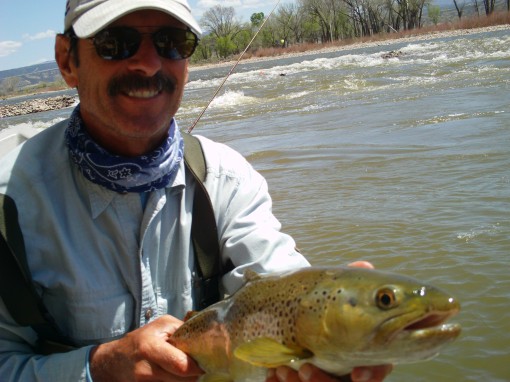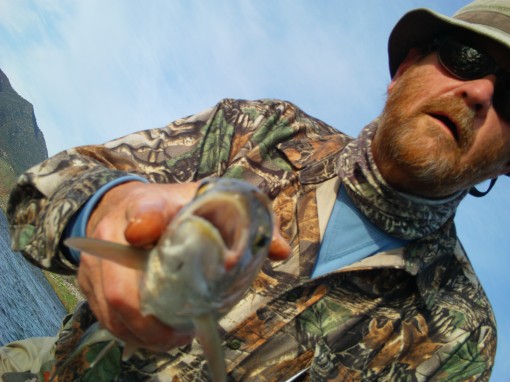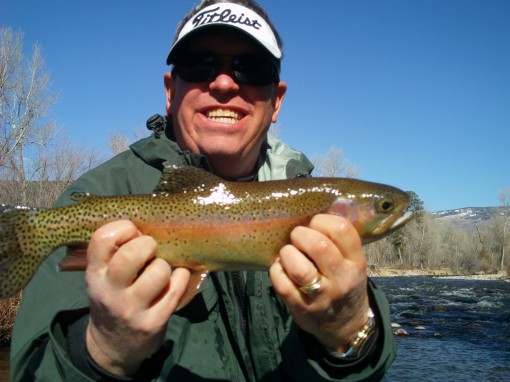Rare conditions around our watershed; with clear water, and all sorts of large bugs hatching, including now: Four-different flavors of Caddis, Blue winged-olives, March browns, and a nice size golden stones, which are not the big females, but rather the males; (scientific name Calineuria Californica male), amongst many other healthy nymphs growing underneath rocks,…the fishing has been outstanding.
Very early, for May conditions, which typically, is high and dirty water and often challenged to find a place to fish, not so this year, as it seems that the normal timetable has been fast forwarded almost six -weeks. There is plenty of food underneath the water’s surface, more so then on the surface, thus, we’ve been most successful nymphing, with certain areas and groupings of fish being receptive to surface offerings.
As the cold fronts sweep through the west, providing cool overnight temperatures, the water levels drop and the clarity is quite impressive.
During our Mother’s day Caddis blizzards, many anglers, found that their fly’s were not capturing the attention of the fish amongst the thousands of other bugs being delivered right to their noses. How can that be? We have all experienced this: Fish going crazy, eating, a thick thick hatch, and your offering not getting any eats. So what to do? Here are some techniques that work for me during the bug blizzards when there is an overabundance of food for our fish: 1. Match the hatch 2. drift your offering perfectly down the feeding line (where all the other bugs are, and where you see the most activity. 3. Be patient, expect no eats initially with this technique, until you have at least hit the perfect drift line ten to twenty times, eventually you will get an eat. This requires much more patience and commitment to your offering than many other styles of fishing. While you see the fish going off, it is difficult to control yourself, second guessing your patterns, wondering why you are not getting near as much action as the river is dictating. Ask yourself these questions: 1. Do I see fish lips? or do I see tails and backs? It stands to reason, when there is more food underwater, in an emerging adults (bugs) sort of situation(spring), it makes better sense for these hungry trout to stage underneath and absolutely gorge, especially knowing how easily spooked fish get with out of water predators. If you see tails and backs, it’s time for an emerger pattern, an offering perhaps six inches to three feet underwater, again, matching the hatch. Preferably a dry-dropper set-up as a strike indicators will look out of place to the fish(especially in clear water), often times putting them down. Still no love? Try this: stick with matching the hatch, but size-up! A bigger meal amongst the thousands can do the trick. Still didn’t work after your twenty perfect feeding-line drifts? Then move. Go shopping, looking for that grouping of fish rising (lips), rather than eating emergers, and stay patient and consistent in your technique.
One theory as to why the fish don’t seem to respond to your fly out of the thousands, is because I believe that when a fish eats a fly it moves enough to capture that meal, while moving, it becomes out of place of its staged feeding zone, thus missing another hundred bugs and potentially your offering. Thus, making it all a formula of TIMING! Can you time your delivery, single out that one fish, and know when he is ready to look for your fly out of thousands? Believe in miracles. If you drift it, they will eat it.










